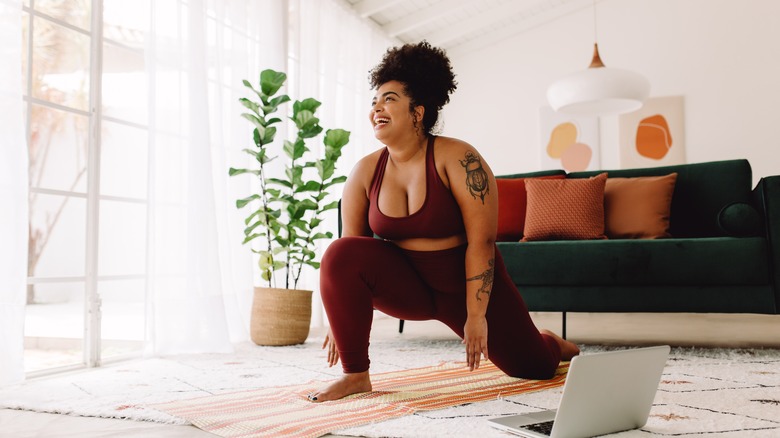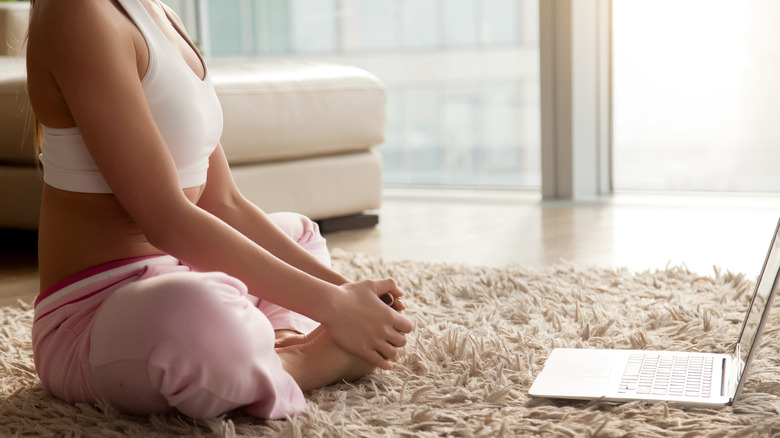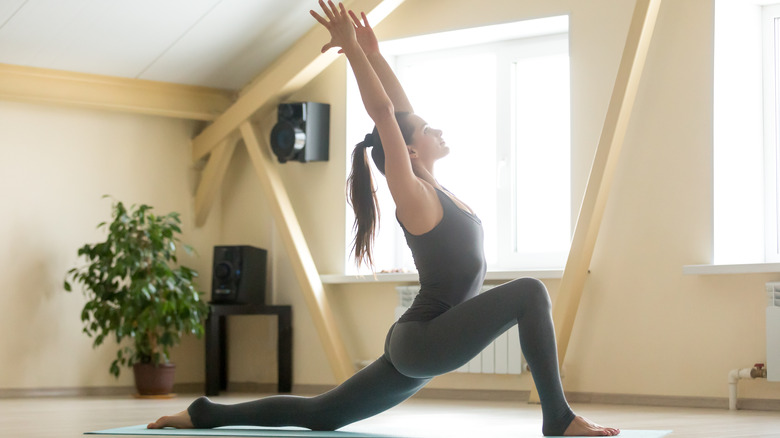Do This To Stretch Your Hip Flexor
The muscles in the upper thighs and hips are vulnerable to overuse from exercise or tightness from sitting in the same position too long. That's why stretching is so beneficial — it helps to prevent injury and increase flexibility, aiding in maintaining mobility and keeping you healthy long-term.
If you work a desk job, muscles in the upper thighs may become stiff from sitting all day. Not stretching after a run or performing other repetitive movements can also be culprits. The American College of Sports Medicine advocates for stretching two to three times per week, regardless of whether or not you maintain an active lifestyle. Of course, depending on your comfort and flexibility, some exercises may be more approachable than others.
Per HSS, the psoas major and iliacus are the primary muscles in the upper thighs to pay attention to when we talk about the hip flexors. And since the hips are connected to the lower back, neglect or improper use of these muscles can lead to back pain in addition to hip discomfort. Here are some stretches that can help you alleviate any issues before they start.
These sitting stretches are low-impact
For sitting stretches, you can roll out a yoga mat or sit on a comfortable bit of floor, settling on your butt. It's important to pay attention to your body's cues here, especially if you have any history of knee injury or pain. A simple stretch to improve hip flexor flexibility is a seated butterfly, in which you take hold of your ankles, bend your legs into a diamond on the floor in front of you, press your knees toward the floor, and put your feet together as close to your body as feels comfortable.
In yoga, the next move is called the pigeon pose. One leg will be bent in front of your torso while the other shoots straight back — imagine a split, but with your front leg shaped light a folded bird's wing and your weight on the outside of the front hip. Keeping your hips square toward the front is the best way to get something out of this stretch, and you can either keep your chest up or lay your torso over your front leg. Your body will also thank you for incorporating these next stretches.
Standing stretches are good for your balance
Standing lunges can be a good introduction to stretching your hip flexors, starting with a shallow bend in the knee and advancing as you feel able. This move can lead into having one knee on the floor and rocking back and forth into the stretch in your back leg's hip. Twisting your upper body in a motion toward your back leg in the kneeling lunge is another advancement of the move, or you can shoot your arms straight up in the air.
The next two moves are adaptable for floor work or as standing stretches. On your back, you can lay one leg flat on the ground while grasping the back of your opposite thigh. Pull this leg as close to your body as feels comfortable, then grab the front of your shin if that feels like a better stretch in your hip flexor. This stretch is also an effective tool for releasing the muscles in the lower back, making it a total win-win. It can also be done standing up as a challenge to your ability to balance on one leg.
WebMD suggests another balance testing stretch, though you can also do it on the floor. This stretch only requires bending one knee so that your foot gets close to your behind. Grab the foot with the same side's arm and work on pulling it closer toward your butt while focusing on the stretch you feel in the front of that same hip.


